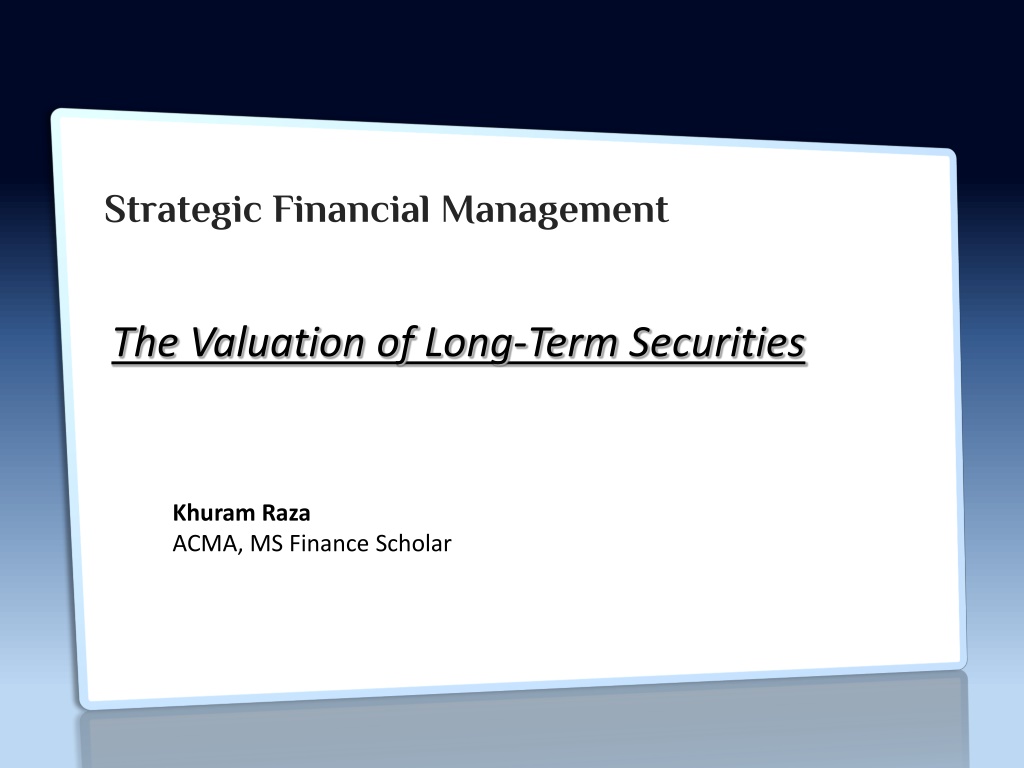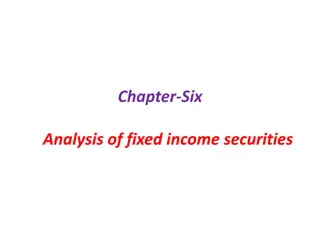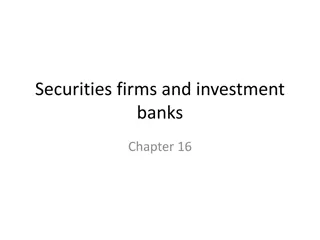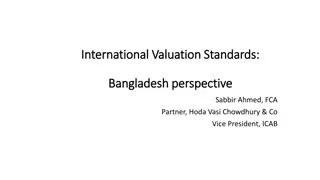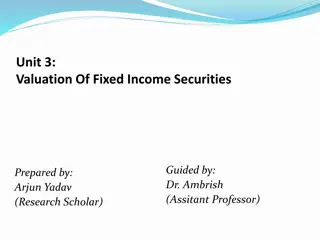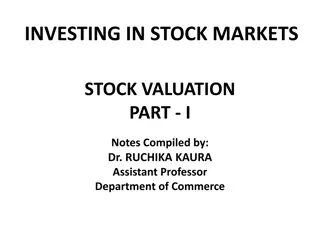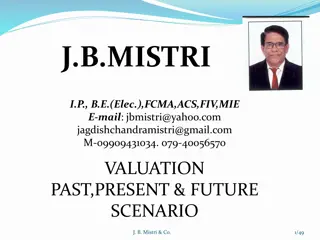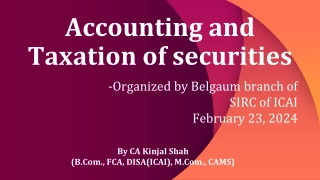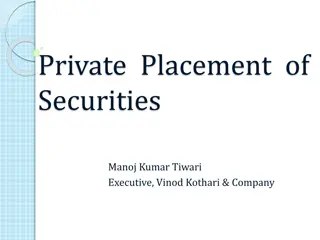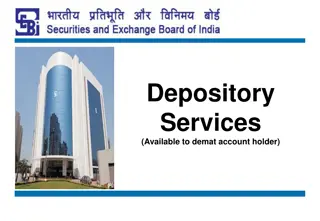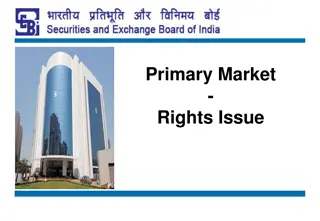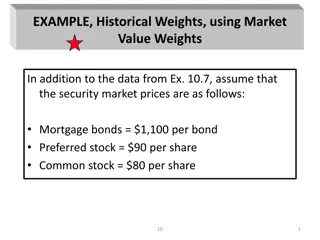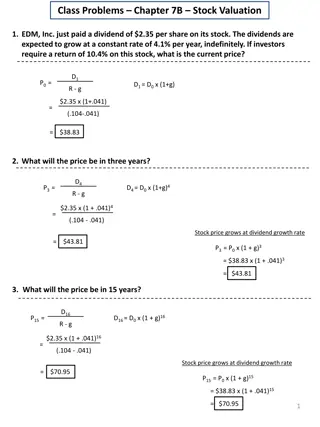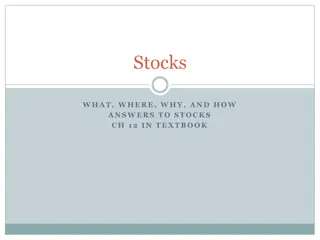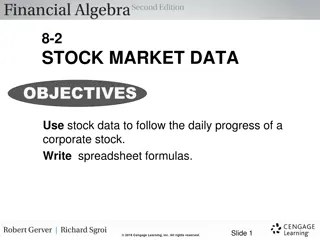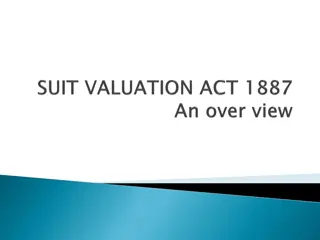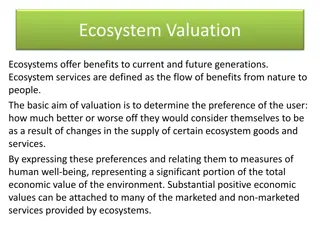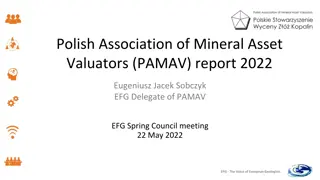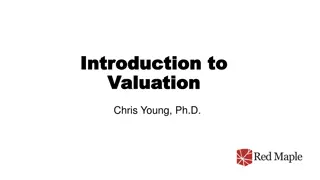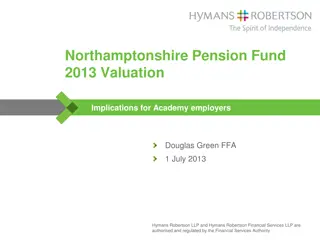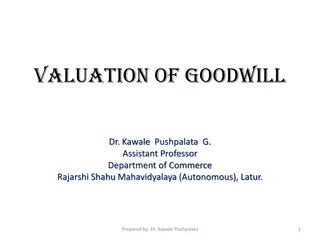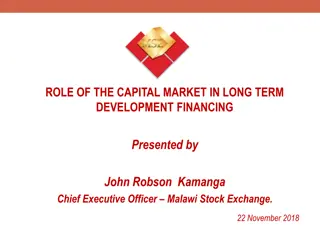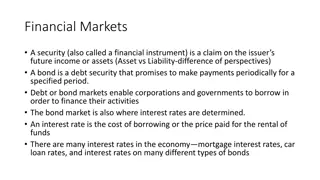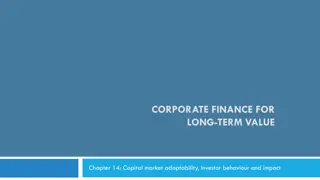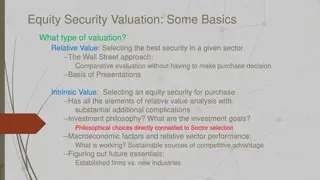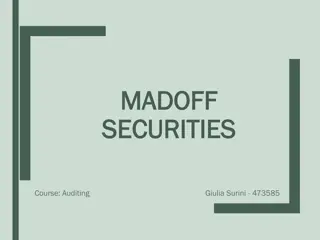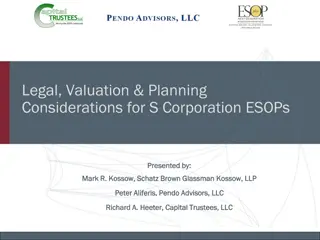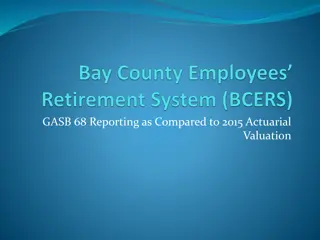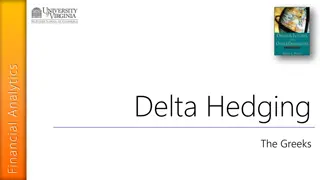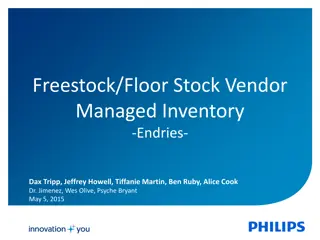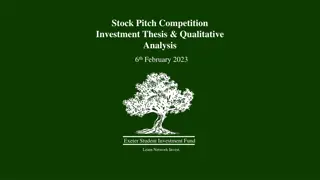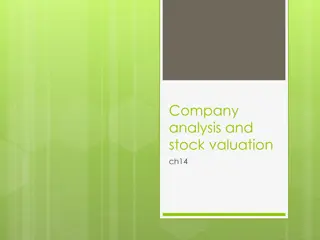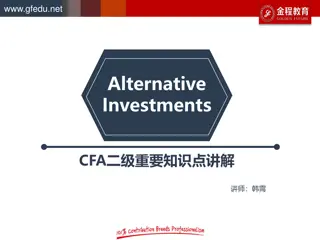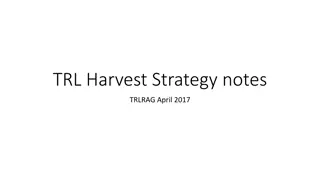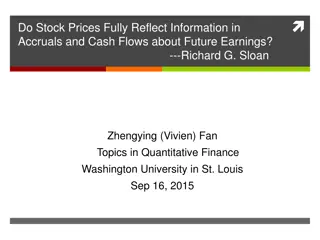Financial Management: Valuation of Long-Term Securities and Stock
This content covers various aspects of financial management, including bond valuation, preferred stock valuation, common stock valuation, dividend valuation models, and dividend growth patterns. It discusses topics such as face value, coupon rates, types of bonds, semiannual compounding, and factors affecting stock valuations.
Download Presentation

Please find below an Image/Link to download the presentation.
The content on the website is provided AS IS for your information and personal use only. It may not be sold, licensed, or shared on other websites without obtaining consent from the author. Download presentation by click this link. If you encounter any issues during the download, it is possible that the publisher has removed the file from their server.
E N D
Presentation Transcript
Strategic Financial Management The Valuation of Long-Term Securities Khuram Raza ACMA, MS Finance Scholar
Bond Valuation A bond is a long-term debt instrument issued by a corporation or government. Face Value Coupon Rate Different Types of Bonds Perpetual Bonds Bonds with a Finite Maturity Nonzero Coupon Bonds. Zero-Coupon Bonds Perpetual Bonds Nonzero Coupon Bounds Zero Coupon Bounds V = I / kd
Bond Valuation Semiannual Compounding Most bonds in the US pay interest twice a year (1/2 of the annual coupon). Adjustments needed: (1) Divide kd by 2 (2) Multiply n by 2 (3) Divide I by 2
Preferred Stock Valuation Preferred stock :A type of stock that promises a (usually) fixed dividend, but at the discretion of the board of directors. It has preference over common stock in the payment of dividends and claims on assets. DivP DivP DivP + + ... + V = (1 + kP) (1 + kP)1 (1 + kP)2 DivP = or DivP(PVIFA kP, ) t=1 (1 + kP)t This reduces to a perpetuity! V = DivP / kP
Common Stock Valuation What cash flows will a shareholder receive when owning shares of common stock? (1) Future dividends (2) Future sale of the common stock shares
Dividend Valuation Model Basic dividend valuation model accounts for the PV of all future dividends. Div Div1 Div2 V = + + ... + (1 + ke) (1 + ke)1 Divt (1 + ke)2 Divt: Cash Dividend at time t = t=1(1 + ke)t ke: Equity investor s required return
Adjusted Dividend Valuation Model The basic dividend valuation model adjusted for the future stock sale. Div1 Div2 Divn + Pricen V = + + ... + (1 + ke)n (1 + ke)1 (1 + ke)2 n: Pricen: shares are expected to be sold. The expected share price in year n. The year in which the firm s
Dividend Growth Pattern Assumptions The dividend valuation model requires the forecast of all future dividends. The following dividend growth rate assumptions simplify the valuation process. Constant Growth No Growth Growth Phases
Constant Growth Model The constant growth model assumes that dividends will grow forever at the rate g. D0(1+g) D0(1+g)2 D0(1+g) V = + + ... + (1 + ke) (1 + ke)1 (1 + ke)2 D1: g: ke: Dividend paid at time 1. D1 = The constant growth rate. (ke - g) Investor s required return.
Constant Growth Model Stock CG has an expected dividend growth rate of 8%. Each share of stock just received an annual $3.24 dividend. The appropriate discount rate is 15%. What is the value of the common stock? D1 = $3.24 ( 1 + 0.08 ) = $3.50 VCG = D1 / ( ke - g ) = $3.50 / (0.15 - 0.08 ) =$50
Zero Growth Model The zero growth model assumes that dividends will grow forever at the rate g = 0. D1 D2 D VZG = + + ... + (1 + ke) (1 + ke)1 (1 + ke)2 D1 D1: ke: Dividend paid at time 1. = ke Investor s required return.
Growth Phases Model The growth phases model assumes that dividends for each share will grow at two or more different growth rates. n Dn(1 + g2)t D0(1 + g1)t V = t=n+1 + (1 + ke)t (1 + ke)t t=1
Growth Phases Model Note that the second phase of the growth phases model assumes that dividends will grow at a constant rate g2. We can rewrite the formula as: n D0(1 + g1)t (1 + ke)t Dn+1 (ke g2) 1 V = + (1 + ke)n t=1
Growth Phases Model Example Stock GP has an expected growth rate of 16% for the first 3 years and 8% thereafter. Each share of stock just received an annual $3.24 dividend per share. The appropriate discount rate is 15%. What is the value of the common stock under this scenario?
Growth Phases Model Example 0 1 2 3 4 5 6 D1 D2 D3 D4 D5 D6 Growth of 16% for 3 years Growth of 8% to infinity! Stock GP has two phases of growth. The first, 16%, starts at time t=0 for 3 years and is followed by 8% thereafter starting at time t=3. We should view the time line as two separate time lines in the valuation.
Growth Phases Model Example 0 1 2 3 Actual Values 3.76 4.36 5.06 0 1 2 3 5.46 0.15 0.08 Where $78= 78 Now we need to find the present value of the cash flows.
Growth Phases Model Example We determine the PV of cash flows. PV(D1) = D1(PVIF15%, 1) = $3.76 (0.870) = $3.27 PV(D2) = D2(PVIF15%, 2) = $4.36 (0.756) = $3.30 PV(D3) = D3(PVIF15%, 3) = $5.06 (0.658) = $3.33 P3 = $5.46 / (0.15 - 0.08) = $78 [CG Model] PV(P3) = P3(PVIF15%, 3) = $78 (0.658) = $51.32
Calculating Rates of Return (or Yields) 1. Determine the expected cash flows. 2. Replace the intrinsic value (V) with the market price (P0). 3. Solve for the market required rate of return that equates the discounted cash flows to the market price.
Calculating Rates of Return (or Yields) a $1,000-par-value bond with the following characteristics: a current market price of $761, 12 years until maturity, and an 8 percent coupon rate (with interest paid annually). We want to determine the discount rate that sets the present value of the bond s expected future cash-flow stream equal to the bond s current market price.
Determining the Yield on Preferred Stock Determine the yield for preferred stock with an infinite life. P0 = DivP / kP Solving for kP such that kP = DivP / P0
Determining the Yield on Common Stock Assume the constant growth model is appropriate. Determine the yield on the common stock. P0 = D1 / ( ke g ) Solving for ke such that ke = ( D1 / P0 ) + g
